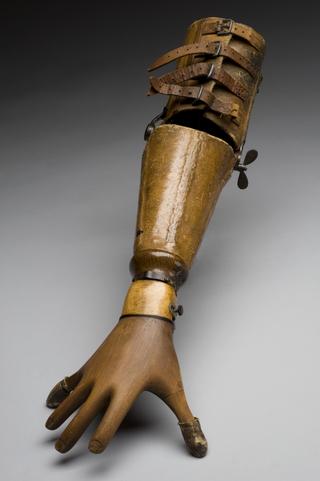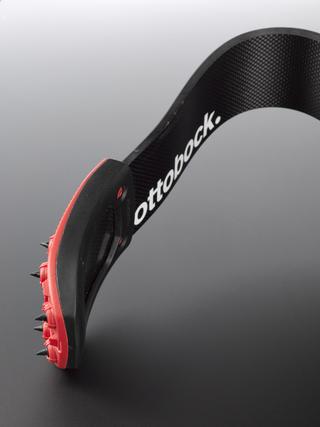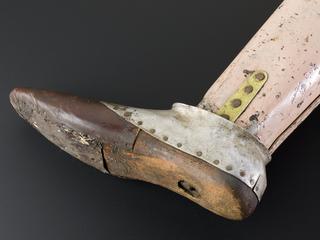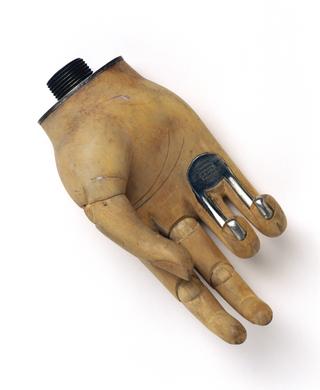Prototype myoelectric hand
Prototype myoelectric hand, Mark 3, with cable attachement, primarily designed and developed by Peter Kyberd as part of the Southampton Hand project at the School of Electronics and Computer Science, University of Southampton, England, 1977-1990
More
Since his PhD research Peter Kyberd has been developing and refining prosthetic arms and hands. He said "I want to do engineering that can make a real difference to people in the every day. Especially those that have additional challenges in doing the most ordinary things. Other areas of engineering, (like building a bridge), solves a problem that works for everyone. Prosthetics is solving problems for the individual." Prototypes are an important part of the process to explore if a prosthetic hand design will work well for its user.
Begun by Professor Jim Nightingale, Professor of Control Engineering at the University of Southampton in the 1960s, the Southampton Hand project ran for over 50 years. Many engineers interested in developing new types of prosthetic arms worked on the project, each adding their own advances to the project. Inspired by how our brains and hands communicate they aimed to make a prosthetic arm that was easy for users to control. The user initiates movement by thinking, which activates the muscles in their arm. This is detected and it opens and closes the hand. Sensors on the hand detect what shape object is within the hand and the microcontroller selects the grasp that is needed. This work led to the first microprocessor controlled prosthetic hands to be used in the outside of clinical trials.
- Measurements:
-
overall: 76 mm x 310 mm x 110 mm,
- Materials:
- metal (unknown) and plastic (unidentified)
- Object Number:
- 2021-1256/1
- type:
- hand





